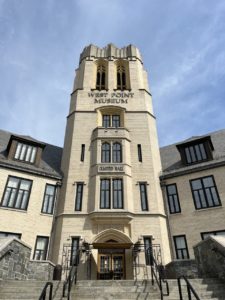 Abraham Lincoln made a secret trip to West Point in 1862. My recent trip to West Point was not so secret, and I also picked up and award in Lincoln’s legacy. I have the Lincoln Society of Peekskill to thank for both.
Abraham Lincoln made a secret trip to West Point in 1862. My recent trip to West Point was not so secret, and I also picked up and award in Lincoln’s legacy. I have the Lincoln Society of Peekskill to thank for both.
General Winfield Scott had been a hero of the War of 1812 and the Mexican War of 1846-1848, as well as the Whig nominee for president in 1840. Old Fuss and Feathers, as he was called because of his insistence on proper military etiquette, was the go-to man to become General-in-Chief at the beginning of the Civil War. By this time, however, he was 75 years old with enough medical problems to be incapable of field leadership, so by the fall of 1861 both he and Lincoln felt the need for a change. Scott retired to West Point to live out his days (ironically, he outlived Lincoln). Gone from leadership, but with his mind still sharp, Scott occasionally would be called on for input on military strategy. The desire for consultation with Scott is what led Abraham Lincoln to secretly travel to West Point in June of 1862. Secret in the sense that it was planned privately and not announced to the public. But once at West Point, the newspapers caught on and spread the news widely, along with speculation as to the reasons. Lincoln never commented on his trip, but the word was out. Anthony Czarnecki, past president of the Lincoln Society of Peekskill, wrote a wonderful history of the visit in the Winter 2012 issue of History, the quarterly journal of the New York State Historical Association.
Tony had invited me to be the keynote speaker for the Lincoln Society’s annual banquet on April 15, 2023. I arrived from my New England road trip the day before and met Tony and Lincoln Society vice president Emily Lapisardi (who took over as president the next night). Emily is music director of the Catholic Chapel at West Point, a position from which she arranged a tour of West Point during my stay. I’ll have more on the tour in another post, as well as my tour of the Lincoln Depot Museum, the Lincoln Society banquet itself, and other aspects of my road trip. I will mention that West Point is an amazing place in itself, but the insider information from Emily heightened the experience even more. It also helped that Emily both gave an impromptu concert on the massive organ in the Cadet Chapel (to the delight of a small tour group that happened to be there at the time) and sang during the Society’s banquet.
It seemed altogether fitting and proper that I should follow Lincoln’s footsteps through New England and to West Point. I could feel his presence. I was even more honored that the Lincoln Society of Peekskill presented me with their Lincoln Legacy Award at the banquet following my presentation. In presenting the award, Tony Czarnecki and outgoing Society president Michael Macedonia mentioned my service as president of the Lincoln Group of DC, my efforts to organize and emcee the Lincoln Memorial Centennial program on the Memorial steps in May 2022, and of course, the success of my book, Lincoln: The Fire of Genius (of which I signed many copies at the banquet). The award itself is a beautiful bronze of the Daniel Chester French seated Lincoln from the Lincoln Memorial.
So, my personal thanks to Tony Czarnecki, Emily Lapisardi, Michael Macedonia, Paul Martin, and everyone else at the Lincoln Society of Peekskill for the wonderful tours and attention given to me on my recent visit. I’m honored to receive the Lincoln Legacy Award and will do my best to, as Lincoln once said, be worthy of the esteem of my fellow men and women.
[All photos by David J. Kent]

Lincoln: The Fire of Genius: How Abraham Lincoln’s Commitment to Science and Technology Helped Modernize America is available at booksellers nationwide.
Limited signed copies are available via this website. The book also listed on Goodreads, the database where I keep track of my reading. Click on the “Want to Read” button to put it on your reading list. Please leave a review on Goodreads and Amazon if you like the book.
You also follow my author page on Facebook.
David J. Kent is President of the Lincoln Group of DC and the author of Lincoln: The Fire of Genius: How Abraham Lincoln’s Commitment to Science and Technology Helped Modernize America and Lincoln: The Man Who Saved America.
His previous books include Tesla: The Wizard of Electricity and Edison: The Inventor of the Modern World and two specialty e-books: Nikola Tesla: Renewable Energy Ahead of Its Time and Abraham Lincoln and Nikola Tesla: Connected by Fate.






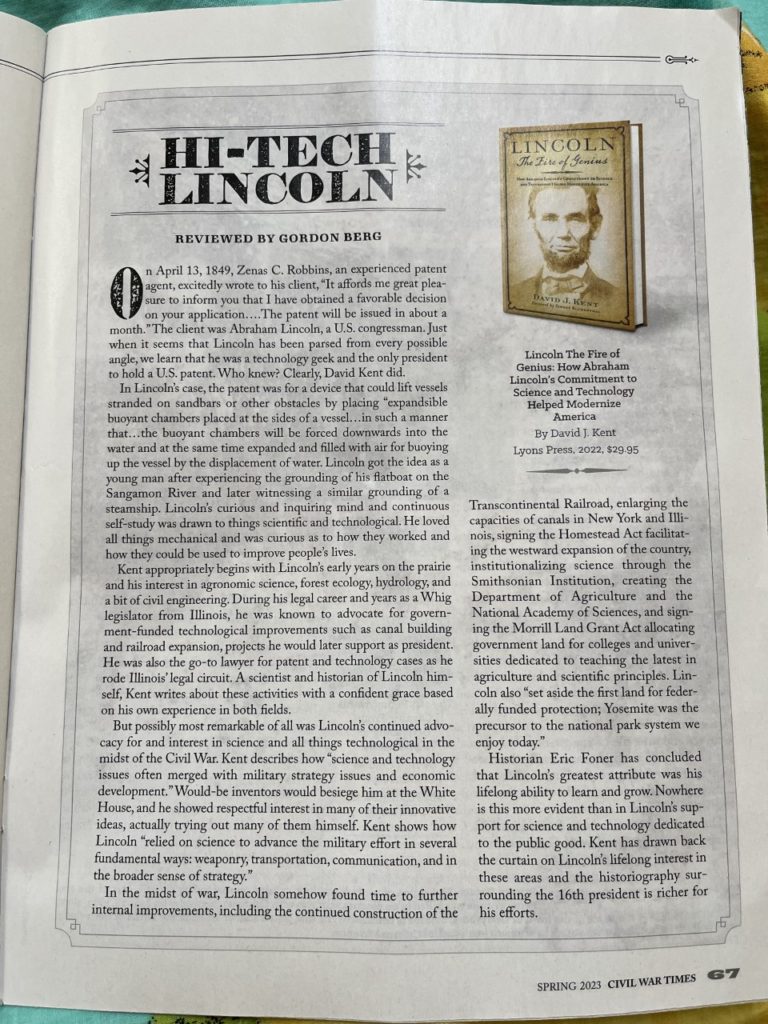
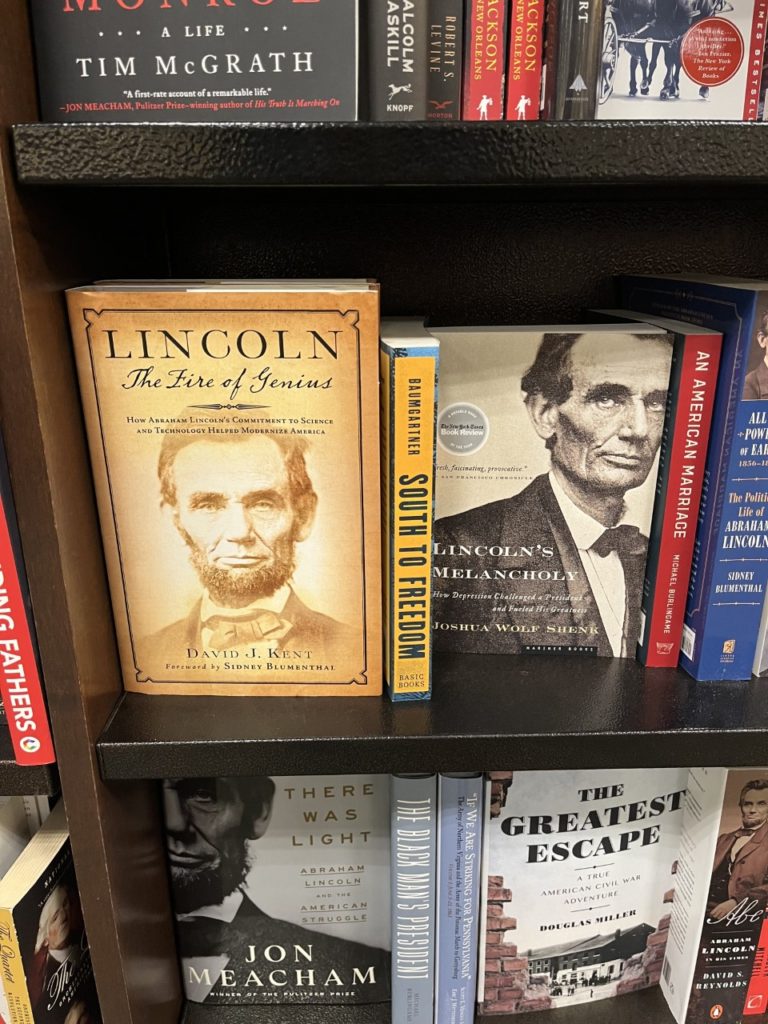
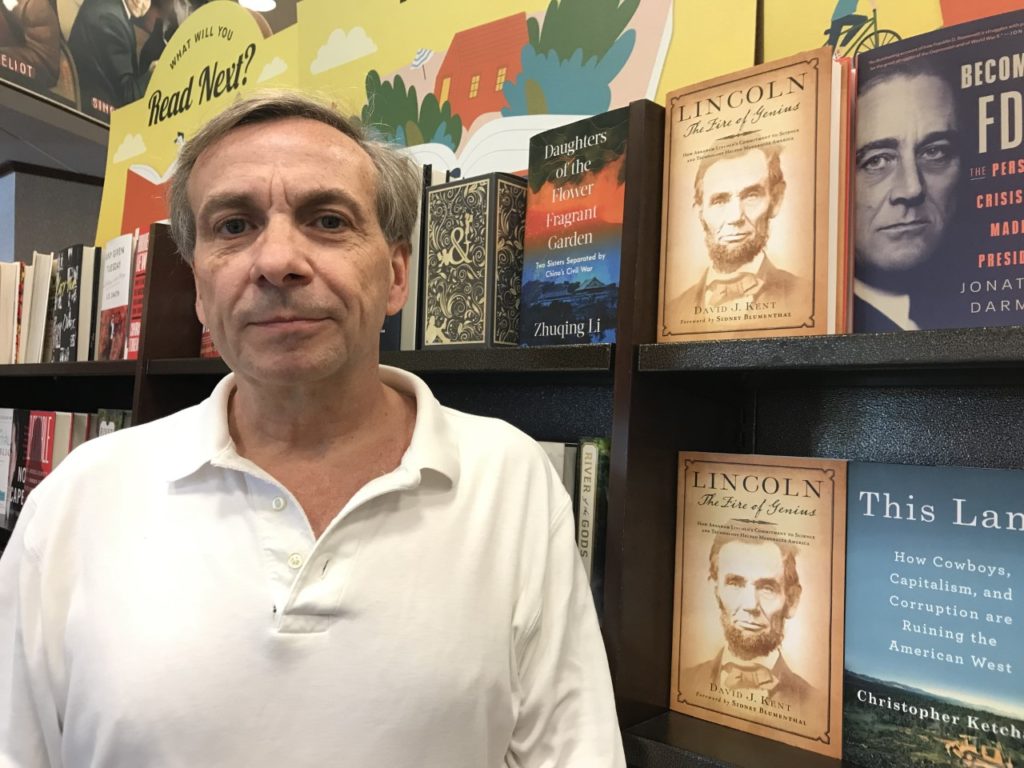
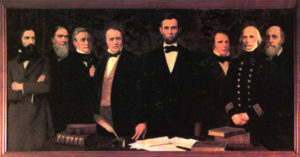 Lincoln sat at his desk in the Executive Mansion on March 3, 1863, and put his signature to the charter creating the National Academy of Sciences, one of many steps Lincoln took to institutionalize science and technology advancement in the federal government. The year 2023 marks the 160th anniversary of that event.
Lincoln sat at his desk in the Executive Mansion on March 3, 1863, and put his signature to the charter creating the National Academy of Sciences, one of many steps Lincoln took to institutionalize science and technology advancement in the federal government. The year 2023 marks the 160th anniversary of that event.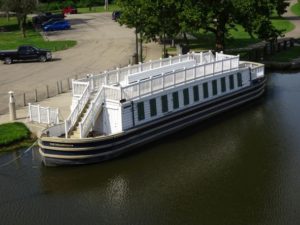 While February 27 is most famous for Abraham Lincoln’s 1860 Cooper Union address, it also is the date on which in 1836 Lincoln bought shares in the stock of the Beardstown and Sangamon Canal. Already the Whig leader in the Illinois state legislator at 27 years old, Lincoln promoted the American System of economic development, promoting internal improvement programs such as canals, roads, navigable rivers, and railroads. The Sangamon River passed by Lincoln’s home in New Salem and had already been a major factor in several incidents in Lincoln’s life as a flatboatman and steamship pilot, so he had made several attempts to improve the navigability of the narrow, curvy river.
While February 27 is most famous for Abraham Lincoln’s 1860 Cooper Union address, it also is the date on which in 1836 Lincoln bought shares in the stock of the Beardstown and Sangamon Canal. Already the Whig leader in the Illinois state legislator at 27 years old, Lincoln promoted the American System of economic development, promoting internal improvement programs such as canals, roads, navigable rivers, and railroads. The Sangamon River passed by Lincoln’s home in New Salem and had already been a major factor in several incidents in Lincoln’s life as a flatboatman and steamship pilot, so he had made several attempts to improve the navigability of the narrow, curvy river.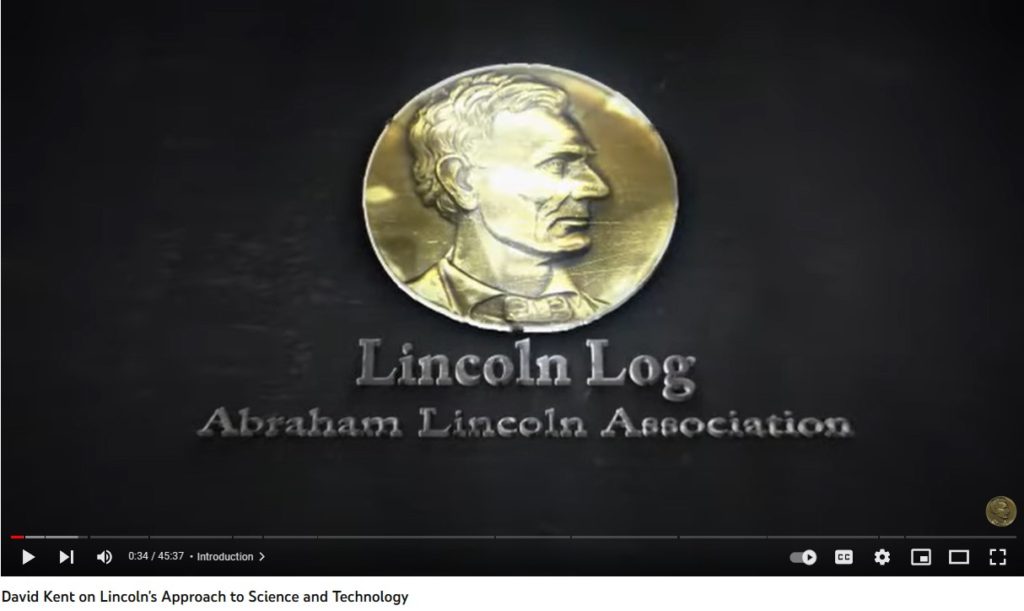

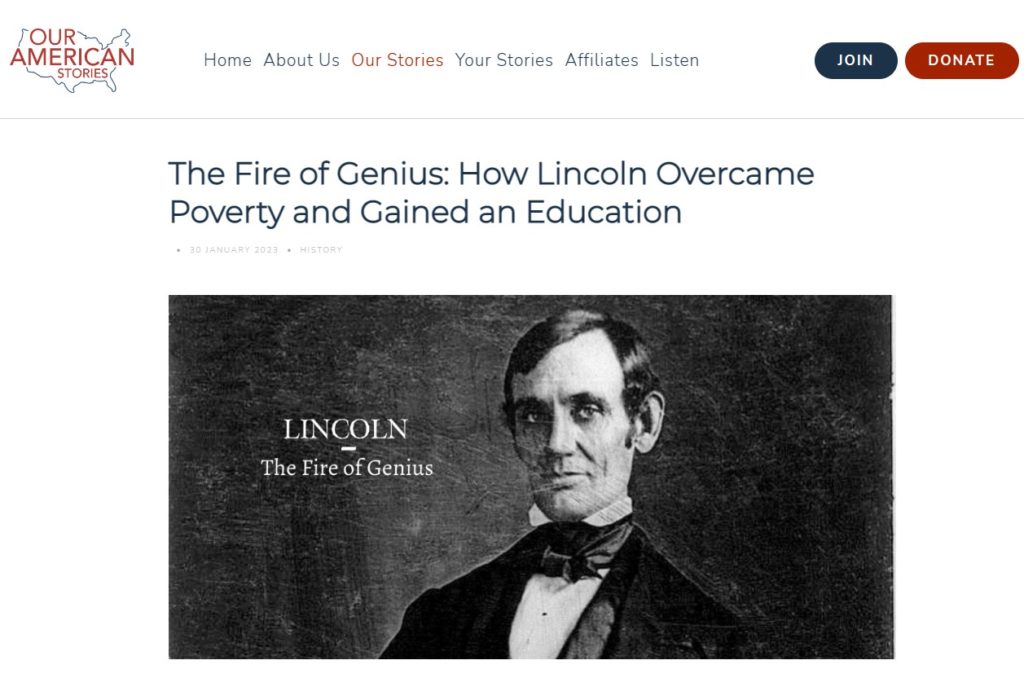
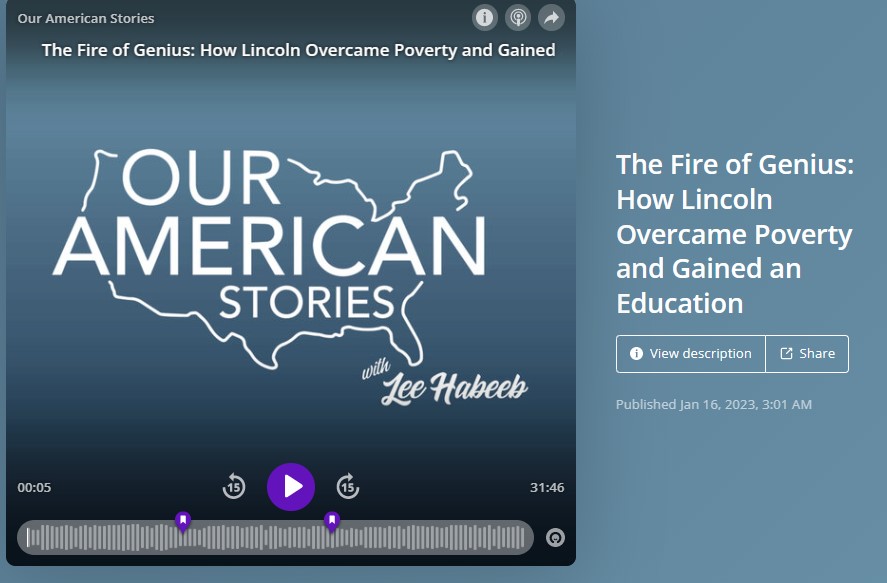
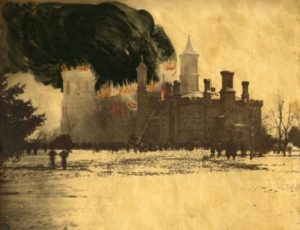 One scientific institution that Lincoln had protected and advanced during the war took a major hit on the frigid winter’s afternoon of January 24, 1865. Joseph Henry sat in his third-floor office in the Smithsonian Castle, alternatively updating his notebook and staring out the great rose window squeezed between the two front towers. Stirring, he noticed a sooty burning odor. Likewise, his daughter Mary was reading in the library until she noticed the room darkening, a thick cloud of smoke obscuring the view. The Castle was on fire!
One scientific institution that Lincoln had protected and advanced during the war took a major hit on the frigid winter’s afternoon of January 24, 1865. Joseph Henry sat in his third-floor office in the Smithsonian Castle, alternatively updating his notebook and staring out the great rose window squeezed between the two front towers. Stirring, he noticed a sooty burning odor. Likewise, his daughter Mary was reading in the library until she noticed the room darkening, a thick cloud of smoke obscuring the view. The Castle was on fire!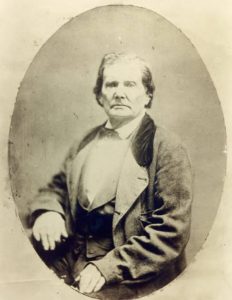 Abraham Lincoln’s father, Thomas Lincoln, died on January 17, 1851, at the ripe old age of 73. Abraham opted not to travel to see his father in his waning days, in part because they were no longer close, but also because Lincoln’s third son, Willie, had been born about a month before and his wife, Mary, was exhibiting significant post=partum sickness. I visited the Lincoln homestead and gravesite near Lerna, Illinois, a few years ago in order to learn more about Thomas and
Abraham Lincoln’s father, Thomas Lincoln, died on January 17, 1851, at the ripe old age of 73. Abraham opted not to travel to see his father in his waning days, in part because they were no longer close, but also because Lincoln’s third son, Willie, had been born about a month before and his wife, Mary, was exhibiting significant post=partum sickness. I visited the Lincoln homestead and gravesite near Lerna, Illinois, a few years ago in order to learn more about Thomas and 









